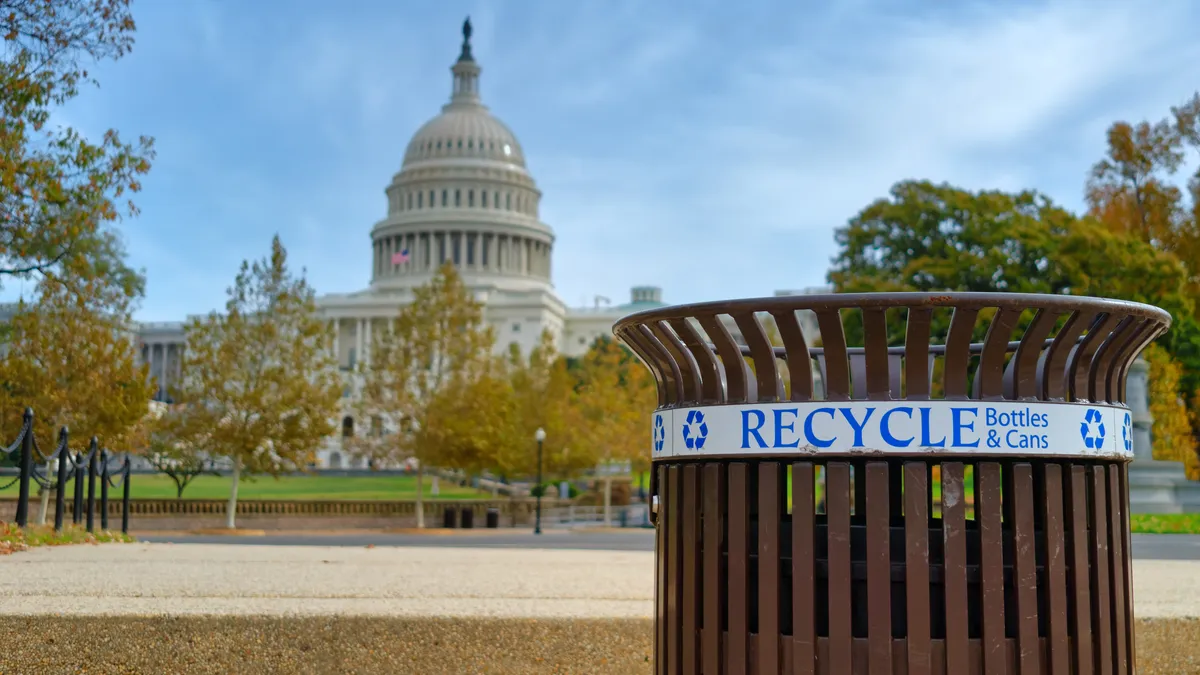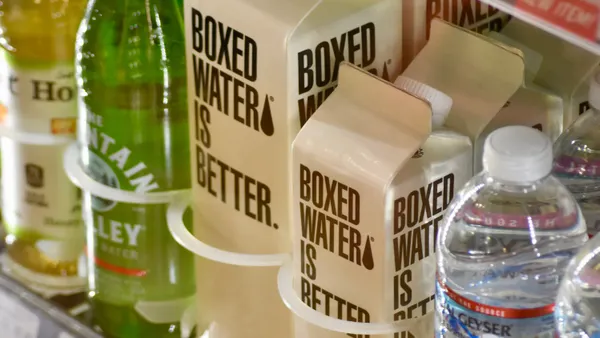The U.S. Postal Service announced a new set of goals last week to enhance sustainability in daily operations and across its network. The goals to reduce greenhouse gas emissions and waste by fiscal year 2030 include changes to USPS packaging and operations.
“As we transform our operating processes and invest in new automation, new technologies, and upgraded facilities and vehicles, we will generate significant efficiencies that reduce our costs, minimize waste across all functions of our operations and slash our carbon footprint,” Postmaster General and CEO Louis DeJoy said in a statement.
The new targets center on three areas: climate action, the circular economy and environmental awareness. Broadly, USPS said it aims to communicate its environmental policy requirements and incorporate them into operations; it will provide on-site and online training and tools to all employees.
Specifically, the packaging-related new fiscal year 2030 targets include:
- Diverting 75% of waste from landfills
- Increasing recycled content in packaging to 74%
- Increasing packaging recyclability to 88%
The announcement said the new goals are measured against a fiscal year 2021 baseline. However, it did not state the current percentage of recycled content in packaging or the current packaging recyclability.
Although USPS listed the diversion rate among its newly released goals, that goal already had been included in the organization’s 2022 sustainability implementation plan, but it was compared to a fiscal year 2020 baseline diversion rate of 62%. The document said that in 2021, USPS achieved a 64.5% diversion rate. USPS recycles 290,000 tons of material annually, according to the sustainability page on its website.
The newly stated fiscal year 2030 targets also include reducing scope 1 and scope 2 greenhouse gas emissions by 40% and reducing scope 3 emissions by 20%. USPS said it’s reducing GHG emissions by “moving freight from air to ground transportation, optimizing delivery routes for trucks and carriers, and procuring reduced-emission and zero-emission vehicles.”
The new actions also align with the organization’s 10-year Delivering For America plan, a modernization strategy it unveiled in 2021 to cut costs and revamp operations. That plan was intended as a turnaround strategy, with the document saying “our organization is in crisis.” The “high performing future” it laid out includes advancing environmental stewardship and advancing sustainability as a “core commitment.” The main environment-related point in that plan was to invest in electric mail delivery trucks, the first of which are slated to roll out early this year, according to the new sustainability targets announcement.
A 2020 report from USPS’s Office of the Inspector General stated that transportation and delivery generate most of the organization’s emissions and that many customers are concerned about the environmental impact of their deliveries. It also described how innovating by implementing reusable packaging, such as mailers or shipping boxes, could benefit the Postal Service by creating a new revenue stream and improving customer impressions of USPS; 76% of survey respondents said they liked the idea of reusable packaging.
Last year, the organization established the USPS Environmental Council to set an environmental strategy for the next 10 years and oversee goal implementation. Its website also notes that Priority Mail and Priority Mail Express paper and cardboard packaging meets certification standards set by the Sustainable Forestry Initiative or the Forest Stewardship Council, and it partners with the How2Recycle program to help employees and customers understand how to recycle USPS packaging.
When USPS reported its earnings for the first quarter of fiscal year 2024, which ended on Dec. 31, it said the Delivering for America plan is putting the organization on an upward trajectory. The agency cited the package shipment segment as a positive point in an otherwise challenging quarter, noting it’s the only category to have experience both volume and revenue growth — year-over-year increases of 5.1% and 2.7%, respectively. Its net loss for the quarter totaled $2.19 billion, compared to a $1.13 billion loss in fiscal Q1 the previous year; it pointed to inflation and retired employees’ pensions as key factors negatively affecting results.













